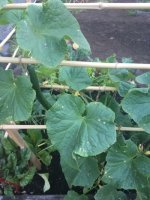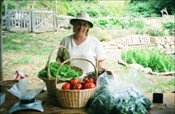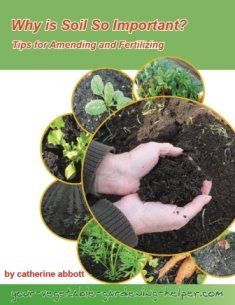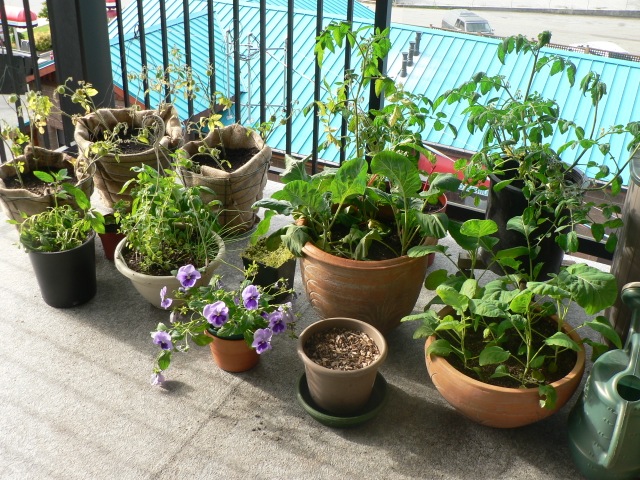Onions
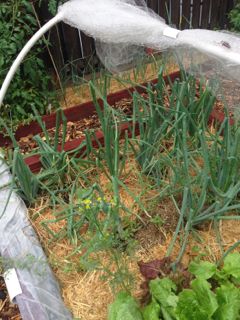
Onions like a cool temperature to start and then need heat to form a large bulb. This vegetable is grown from sets, seeds or transplants.
Onions sets consist of small dry bulbs that are grown and harvested the previous year for the purpose of being re-planted and grown to produce bulbs. Sets can be easily purchased and are a good way to start growing, however they can be expensive if you want to grow a large amount.
Seeds take a long time to germinate so if you decide to plant directly into your garden make sure you clearly mark the area.
This vegetable needs to be planted early and requires very fertile soil.
Botanical Family - Alliaceae/Onion Family
Location - Thrive in moist (not wet) location that is also well-drained and reasonably free from stones.
Soil - Rich, moist loam, preferably with some clay with pH of 5.6-6.5.
Soil Preparation - Dig in 3-4 inches of compost or aged manure before planting. Requires lots of nitrogen.
Seeding info for Onions:
Seed Info
- Seed Spacing - 4-6 inches apart ½ inch deep
- Germinate in soil temperature of 21 - 24 C
- Days to Maturity - 100-150 days
Planting Times - Sow indoors in early March; transplant at 4-8 weeks.
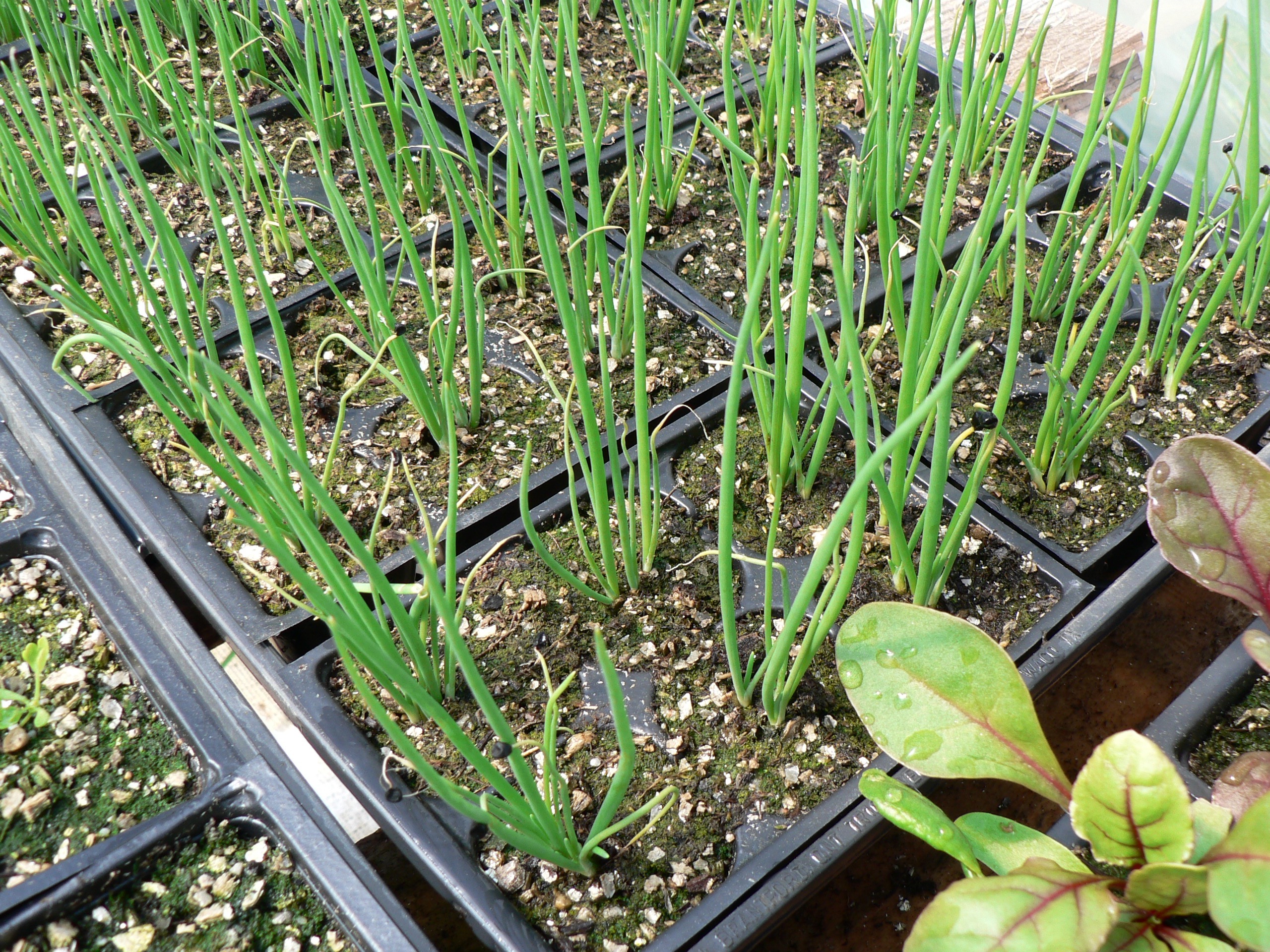 I have always started my onions from seed in early March.
I seed them in sets of 4 plants that way I can grow more in a small space.
I have always started my onions from seed in early March.
I seed them in sets of 4 plants that way I can grow more in a small space.Planting Instruction
Sow 5 seeds in each cell (72 cell tray) ¼ inch deep. Maintain uniform moisture. Seeds will take up to 4 weeks to germinate, so do not fret too soon.
Limit height of transplants to 3-4 inches tall, cut with scissors to stay upright. After transplanting they need to get a second feeding of compost or organic fertilizer within 6 to 8 weeks.
Companion Planting
- Positive affect: beet, cabbage, carrot, lettuce, potato, tomato
- Negative affect: bean, pea
Watering - During early stages they require an abundance of water. Do not water once tops start turning brown (early August).
Weeding - Keep well weeded.
Disease & Insects - Very few diseases. Use rotation and destroy any plants that are infected.
 red onions
red onionsHarvest
As the plants mature, the tops will fall to the ground. When 25-50% of the tops fall over, lay the rest down with a rake to hasten bulbs to maturity.
After a day or two, pull the bulbs and spread out on the ground in the sun and allow them to remain there for 2 days. Then cut the tops an inch above the bulbs.
Storage
Clean off any dirt but do not wash before storing. Do not store any that are soft as they will contaminate the whole lot. Store in mesh bags; 0-7C will keep for 3-8 months.
Store whole onions in a cool dry place. If stored properly onions will keep for several months.
Cut ones need to be stored in a container or plastic bag in the refrigerator.
Recent Articles
-
Vegetable Gardening Frustrations: Lessons for a Better Harvest
Oct 29, 24 07:37 PM
Every vegetable gardener knows that while the rewards are sweet, the vegetable gardening frustrations can be a bit bitter. -
Small Space Vegetable Gardening
Sep 23, 24 05:06 PM
Small Space Vegetable Gardening - Tips for growing vegetables in small spaces. -
Why Fall Gardening?
Aug 16, 24 12:24 PM
Fall Gardening: A guide to a Bountiful Harvest.
